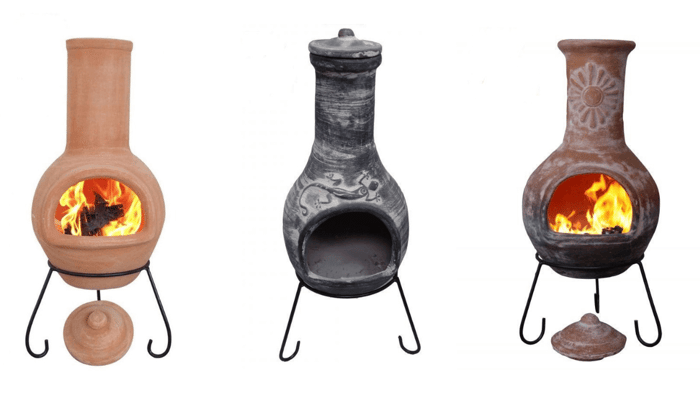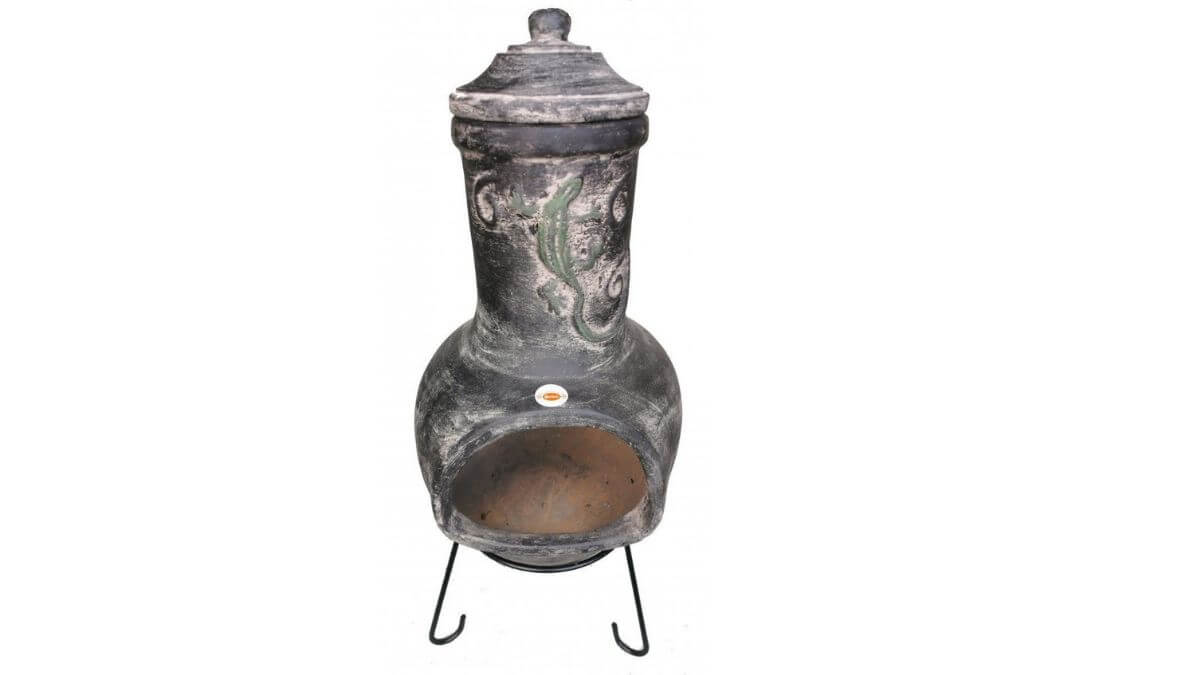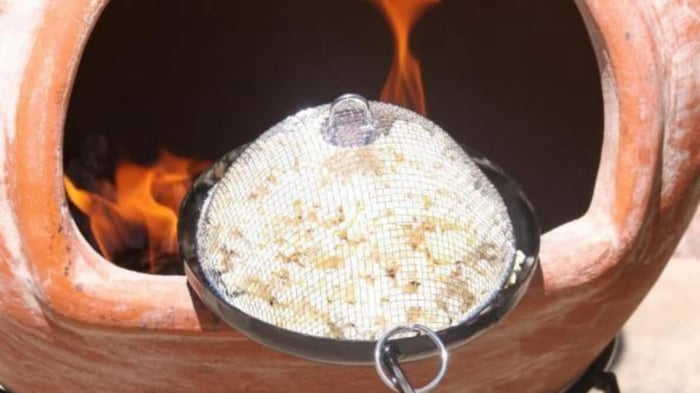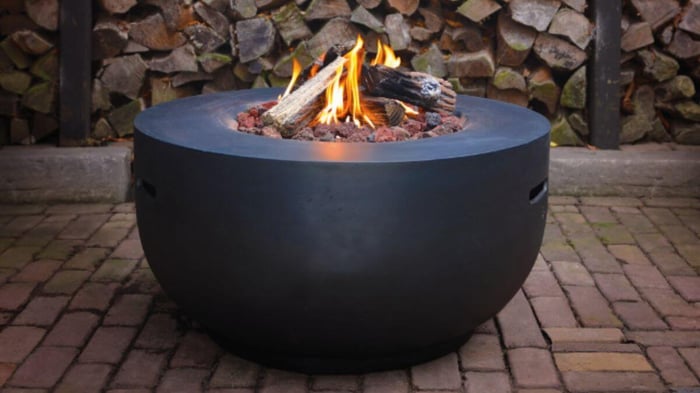Everything You Need to Know Before Buying A Clay Chimenea
So, you’re thinking about getting a clay chimenea for your garden or outdoor space? Excellent choice!
There is something truly special about gathering friends and family around a nice wood burning fire, enjoying a drink and some good food, and whiling the night away with great conversation. That is exactly what you’ll get from your chimenea.
Clay chimeneas, however, do come with some maintenance and care requirements that you should be aware of before buying.
To make life easy for you we have collated all of our top tips and advice so that you know everything you need to before buying a clay chimenea.
Let’s dive in…
What Is A Chimenea?
Chimenea’s date back to the 17th century and originate from Mexico. Their design and the way they are built haven’t really changed over the years.
Originally they were used as bread ovens, though, while you can still use them for cooking and baking their modern use is primarily as a lovely, warming social focal point for an outdoor space.
Every chimenea is hand-made using wet clay, which means every one is unique. They are made from two pieces, the chimney, and the wood burning base, which are then joined together to create your chimenea.
The process of making a clay chimenea has been perfected over the years and involves air drying for several days before being baked in a 900+ degree kiln. Once cooled the outside is painted for decoration.
What Fuel Do You Use In A Chimenea?
The primary fuel to use in your clay chimenea is wood. A good dry hardwood is perfect and will burn beautifully without much in the way of sparks.
There are some who use charcoal as their fuel of choice in their chimenea as it burns for longer and gives off a lovely even heat. A word of warning if you are intending to do this, however…
Do Not use any sort of lighter fluid or gasoline in your chimenea!
Lighting charcoal can be difficult without some sort of accelerant like lighter fluid, but using any sort of lighter fluid in a confined space (like the inside of a chimenea) causes a serious danger of explosion.
Top Tip – If you want to burn charcoal in your chimenea you are best to start burning some hardwood and then adding your charcoal once the fire is burning and the embers are hot.
Where Can You Use Your Chimenea?
You can only use your chimenea outside. They are not designed to be indoor wood burning stoves or log fires, so please don’t use them anywhere but an open space away from buildings, trees, and anything flammable.
There are a number of reasons to keep them outside, ventilation of the smoke being a major one.
They are also fragile, as they are made from clay, and the danger of them breaking and releasing the fire indoors is not a risk anyone should be willing to take.
You can also consider using a floor protector, to protect your decking or patio.
How To Look After Your Clay Chimenea?
Clay chimeneas are far more breakable than iron and need to be treated with care.
Making sure you follow the guidance in this article will help ensure your clay chimenea have a long and healthy life.
What we are wanting to avoid at all costs is for your chimenea to crack. Clay is hard but can be susceptible to changes in temperature, moisture, and pressure (ie. don’t hit it with a big bat).
Here are some quick tips to remember when installing and using your chimenea:
-
Never lift a chimenea by its chimney or stack – remember, it was built from two pieces and while the join will be seamless, it is still a weak spot so always lift from the base.
-
Keep it on a level surface – when deciding where to put your chimenea you want to make sure you have a solid level surface for it to sit on.
-
Ideally, find its final home straight away – having something heavy that breaks when you drop it is not an ideal combination if you are intending on moving something around a lot. Ideally, you want to choose your chimenea’s spot in the garden before it even arrives and then not move it again.
-
Get a cover for your chimenea – this really is essential if you want to keep your chimenea safe through all the seasons.
- Use a clay cap - a clay cap protects the chimenea from rain damage, repeated exposure to moisture could cause cracking or erosion of the clay over time. It can also enhance the appearance of the chimenea.
-
Add a layer of sand at the bottom of your chimenea – hot wood coals directly touching your clay can make it crack. The best way to protect against this is to have a layer of sand, around three inches thick, at the bottom of your chimenea that you can build your fire on.
-
Lava Stones: Many prefer using lava stones instead of sand. One bag is usually enough to cover the bottom of the chimenea. Lava stones are lightweight and just like sand are used to protect the clay. They can be used time and time again.
-
Don’t ever use water to put out your fire – throwing water into your chimenea to put the fire out will almost certainly cause your chimenea to crack. Instead, if you want to put the fire out quickly then you should use sand.
-
Don’t get carried away with your fire – your chimenea is not a blast furnace so please don’t get carried away with the size of fire in there. We promise you that a modest fire will give out more than enough heat to keep you warm on a cold night.
Once you have your chimenea installed then there are a couple of extra things you should do before you are able to use it regularly and fully enjoy it.
Should You Seal A Chimenea?
We always recommend using a sealer on the outside of your chimenea as the first port of call.
A simple wood sealer will work fine and what this will do is help keep the moisture out and help protect against cracks.
How To Season Or Cure Your Clay Chimenea?
The first fires you light in your clay chimenea are the most important as these are what will “season” or “cure” your chimenea and set it up for continued use.
Taking the time to cure your chimenea protects it from the changes in the heat it will experience from constant use and expand the life of your chimenea to no end.
Don’t worry, we’ve got you covered here too - Here are the four steps we always recommend curing your clay chimenea:
-
Step 1 – Fill your clay chimenea with sand up to about halfway. This will stop the fire from touching the sides of your chimenea.
-
Step 2 – build and light a small fire of just kindling and paper. Make sure you position the fire in the middle so that none of the flames hit your clay. Leave it to burn and go out naturally.
-
Step 3 – Let your chimenea cool completely. This can take a while so don’t rush it, and don’t move on to step 4 too soon.
-
Step 4 – Repeat steps 1-3 a few more times (ideally up to five or six times). Each time you can remove some of the sand, slowly decreasing the level down to about 3 inches of sand (which is where you want to leave it).
Now we’re not saying that this is essential to do, but we do highly recommend it if you want to protect your chimenea from cracking.
What To Do If My Clay Chimenea Cracks?
With the best will in the world, and following all the guidance, your chimenea may still crack. Clay can be a fickle beast. The question is, does this actually mean the end of your clay chimenea?
There are ways you can fix it and patch up the cracks. We recommend using an epoxy adhesive specifically designed for high temperatures. These will do a great job of holding your chimenea together and can withstand the change in temperatures too.
Frequently Asked Questions
Can Clay Chiminea Get Wet?
Yes, a clay chimenea can get wet but before lighting again, make sure it has dried out completely. We do recommend a chimenea cover to protect and make the chimenea last longer.
How Do I Clean My Chimenea?
It is crucial to maintain the cleanliness of your chimenea, however, it is recommended to avoid excessive movement of clay chimeneas as they are fragile and can be easily damaged.
- It's important to allow the chimenea to cool before cleaning it.
- Remove any ash and debris from the chimenea.
- Brush the interior carefully with a stiff-bristled brush to remove any soot and ash residue.
- Using mild soap on a damp cloth, clean the outside of the chimenea to remove any dirt or grime.
How Long Will My Chimenea Last?
The lifespan of a clay chimenea can vary depending on several factors, such as the quality of the clay, the frequency of use, and the amount of care it receives.
With proper care and regular cleaning, a clay chimenea can last many years. However, if it's subjected to harsh weather conditions or is not taken care of properly, its lifespan may be reduced.
Final thoughts
We hope you have found our tips useful, and please remember if in doubt you should always follow the manufacturer's advice.
Owning a clay chimenea really is an incredibly enjoyable thing and you’ll wonder how you ever got on without it.
If you follow these guidelines and take the time and consideration to look after it properly then it will serve you well for years and years to come. Good luck and enjoy!
Subscribe to our email
Just enter your email address below to receive a monthly email with links to all the latest blog posts. Simple unsubscribe at any time.








